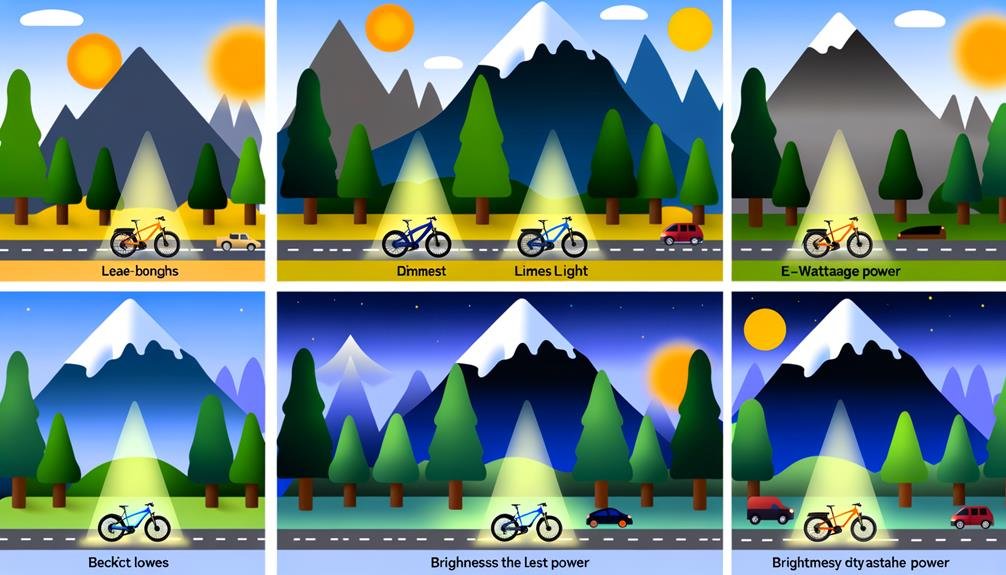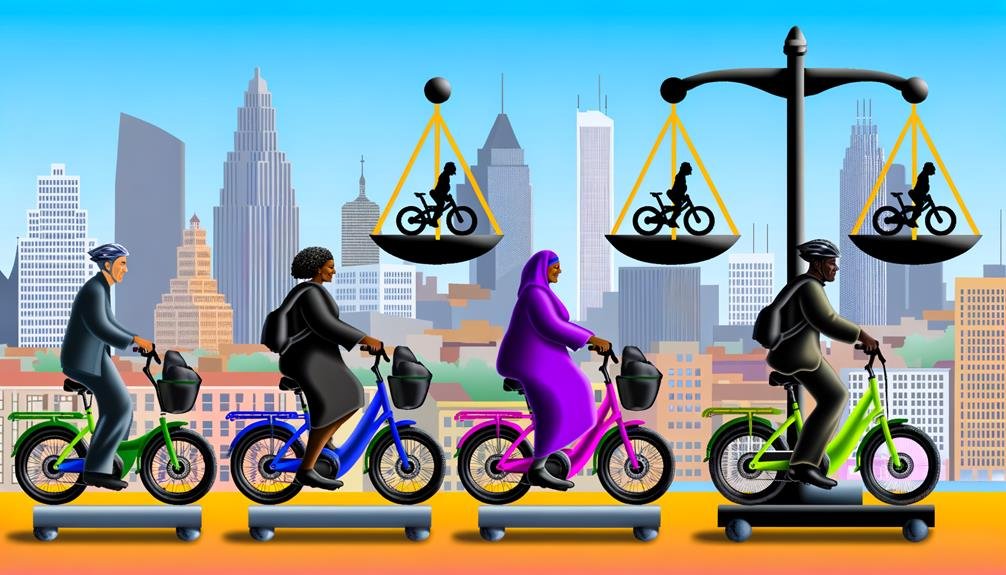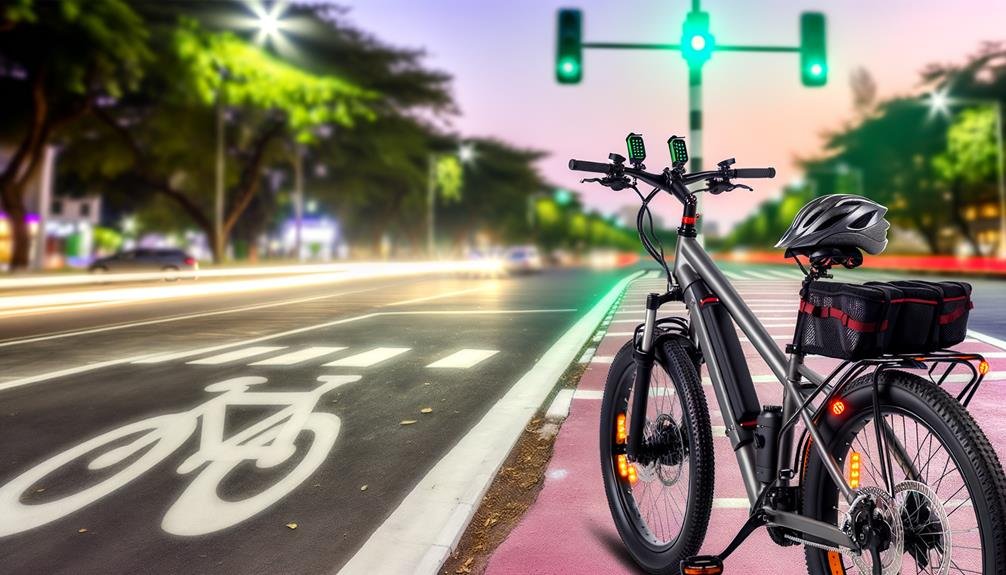Charles Miller is a veteran bike enthusiast with over 12 years of experience dealing with bikes as a mechanic. Despite immense love and expertise for...
Determining the ideal wattage for an ebike is not a one-size-fits-all scenario. It necessitates a careful consideration of various key factors such as the rider's weight, the steepness of the terrain, the desired speed, and the legal regulations in a given area.
While a 250-watt motor might suffice for a leisurely ride on a flat terrain, it could prove inadequate for more challenging landscapes or for carrying heavier loads. On the other hand, motors with higher wattage like 500 or 750 watts offer increased power and speed, but come with the downside of higher energy consumption and potential regulatory restrictions.
In this context, it becomes apparent that the question of 'how many watts is good for an ebike' does not have a straightforward answer, but rather invites a more nuanced exploration of the rider's needs and circumstances.
Key Takeaways
- The wattage of an ebike motor determines its power and performance.
- Lower wattage motors are more efficient and offer better battery efficiency.
- Higher wattage motors provide greater power, speed, and acceleration.
- The ideal motor wattage depends on factors such as rider's weight, terrain steepness, desired speed, and legal regulations in the area.
Understanding Ebike Wattage
The concept of wattage, as a fundamental indicator of an e-bike motor's capacity to augment the rider's pedaling power, plays a pivotal role in determining the performance and efficiency of the e-bike. Understanding ebike wattage is therefore crucial to making an informed purchase decision.
Wattage of the motor reflects the E-Bike Power, with common watt motors ranging from 250 to 750 watts. Lower wattage offers better battery efficiency, while higher wattage provides greater power. For instance, a 250-watt motor is efficient in battery consumption, but may falter on steeper terrains. On the other hand, a 750-watt motor, being the most powerful available, offers significant speed and acceleration, but consumes more energy.
Regulatory factors also influence the choice of motor power. Notably, ebike manufacturers must adhere to regional regulations concerning e-bike wattage. In some regions, 350-watt motors, which strike a balance between power and efficiency, are the maximum legal limit. Understanding these factors, therefore, is crucial to choose how many watts is good for an ebike, based on individual requirements and regional regulations.
Decoding the Power Ratings
Deciphering the power ratings of electric bike motors, measured in watts, provides insight into their capacity to deliver power, which directly influences ride quality, acceleration, and climbing capabilities. Power ratings, or wattage, are a crucial aspect of understanding the performance potential of electric bicycle motors.
For an easy comparison, consider this table:
| Motor Wattage | Performance Characteristics |
|---|---|
| 250 Watts | Adequate power for flat terrain, energy-efficient |
| 350 Watts | Balance of power and efficiency, good for moderate hills |
| 500 Watts | Higher power for acceleration and steep climbs, higher energy consumption |
| 750+ Watts | Ultimate DIY Ebike power, suitable for challenging terrains and heavy loads |
Higher wattage motors deliver more power, resulting in faster acceleration and improved climbing ability. However, they also have a higher consumption rate, hence the need for a larger or more frequent battery recharge. Lower wattage motors are more efficient and ideal for flat terrains or lighter loads.
Regulatory factors such as e-bike wattage regulations also influence the choice of motor wattage. For instance, 47 states classify a 750-watt e-bike as a bicycle, not a motor vehicle. Therefore, understanding the power ratings of e-bike motors is essential in choosing the right electric bicycle.
The Ideal Wattage for Different Terrains

Navigating through different terrains requires an understanding of the ideal motor wattage for your e-bike, which varies depending on the type of ride and landscape. Electric bicycles with a 250-watt motor are perfect for flat land cruising, city riding, and light trails, providing just enough power without sacrificing efficiency.
For riders who often find themselves navigating hills without difficulty, a 500-watt motor offers the right power level. This high power motor can handle hills and heavy loads, making it suitable for mountain or trail bikes.
When it comes to hill climbing, motors ranging from 750 to 1000 watts excel. These motors provide much power, faster acceleration, and enhanced climbing ability, found commonly in cruisers, touring, and hybrid e-bikes.
For heavier riders or those who frequently traverse steep hills, a 1500-watt motor provides a significant power boost. This motor ensures a challenging terrain or demanding ride won't slow you down.
Choosing Your Ebike's Power Level
Understanding the correlation between power and efficiency is crucial in making an informed decision about the right wattage for your e-bike. The motor is the heart of your e-bike, and its power output, measured in watts (unit of power), determines if it's powerful enough to carry you uphill or speed you along flat terrain.
A 250-w motor, commonly found on entry-level e-bikes, uses less energy, making it efficient for battery consumption. However, it may struggle on steep hills or when carrying heavy loads. A 350-w motor, on the other hand, offers a balance between power and efficiency, providing a decent climb ability and acceleration without consuming too much energy.
But how much Power Does An Electric bike motor need? The answer depends on your usage and locale. Regulatory limitations in certain areas may restrict the power output of the electric motor, capping it at a certain wattage. Personal preferences also play a part in choosing your ebike's power level. If you want a bike for leisurely rides, a less powerful motor might suffice. For a daily commute or more challenging terrains, a higher wattage can ensure a smooth ride.
Impact of Law on Ebike Wattage

In many countries and regions, regulations on e-bike wattage significantly influence the selection of motor power, thereby directly affecting your choice of e-bike. The impact of law on ebike wattage often stipulates the maximum amount of power an ebike can possess, which can limit the actual power of hub motors and increase battery consumption.
To understand better, consider the following:
- In certain areas, higher wattage motors may require special permits, limiting their accessibility.
- The latest news indicates that 250-watt and 350-watt motors are widely accepted due to regulatory constraints.
- Means more power, but laws may restrict the availability of higher wattage motors.
- Some regions legally limit the maximum wattage for e-bike motors, affecting the choice of motor power.
- Regulations also indirectly influence battery consumption, as more power often means quicker battery depletion.
The take-home message is that the impact of law on ebike wattage can significantly influence your selection. While higher wattage may seem attractive, regulatory constraints and battery consumption are essential factors to consider when choosing your e-bike.
Frequently Asked Questions
How Many Watts Is a Good Electric Bike?
The optimal wattage for an electric bike varies, considering factors such as torque, speed limitations, terrain adaptability, weight capacity, and legal restrictions. Generally, 250-500 watts offer a balance between power, battery efficiency, and ride smoothness.
Is 750W Enough for Ebike?
A 750W e-bike provides ample power for varied terrain suitability, uphill performance, and load capacity. However, battery efficiency, range estimation, and speed potential depend on individual usage. Consider local regulations and touring capabilities for comprehensive e-bike durability.
Which Is Better 350W or 500w?
A 500W motor provides superior torque, speed, and performance on rough terrains, but consumes more energy, affecting battery longevity and maintenance costs. Conversely, a 350W motor offers better energy efficiency, sufficient for average rider weight and terrain considerations.
Is a 250 Watt Ebike Powerful Enough?
A 250-watt ebike can be sufficient for basic commuting over flat terrain, offering decent battery life and maintenance efficiency. However, its uphill performance, speed capabilities, and load capacity may be limited compared to higher wattage bikes.
Conclusion
In conclusion, the choice of wattage for an ebike is dictated more by individual requirements, terrain, and legal constraints rather than a standardized norm.
While a 250-watt motor suffices for a casual ride, higher wattage of 500 or 750 watts caters to more demanding terrains and loads.
However, these come with increased energy consumption.
Thus, a discerning balance between power and efficiency, coupled with a keen understanding of the law, can lead to an optimal ebike experience.

Charles Miller is a veteran bike enthusiast with over 12 years of experience dealing with bikes as a mechanic. Despite immense love and expertise for his Tacoma, he rides his Trek Ebike more. Anytime you meet him, you’ll either hear him talking about Bikes, or writing about all things bikes and cars on this blog.
More Posts


